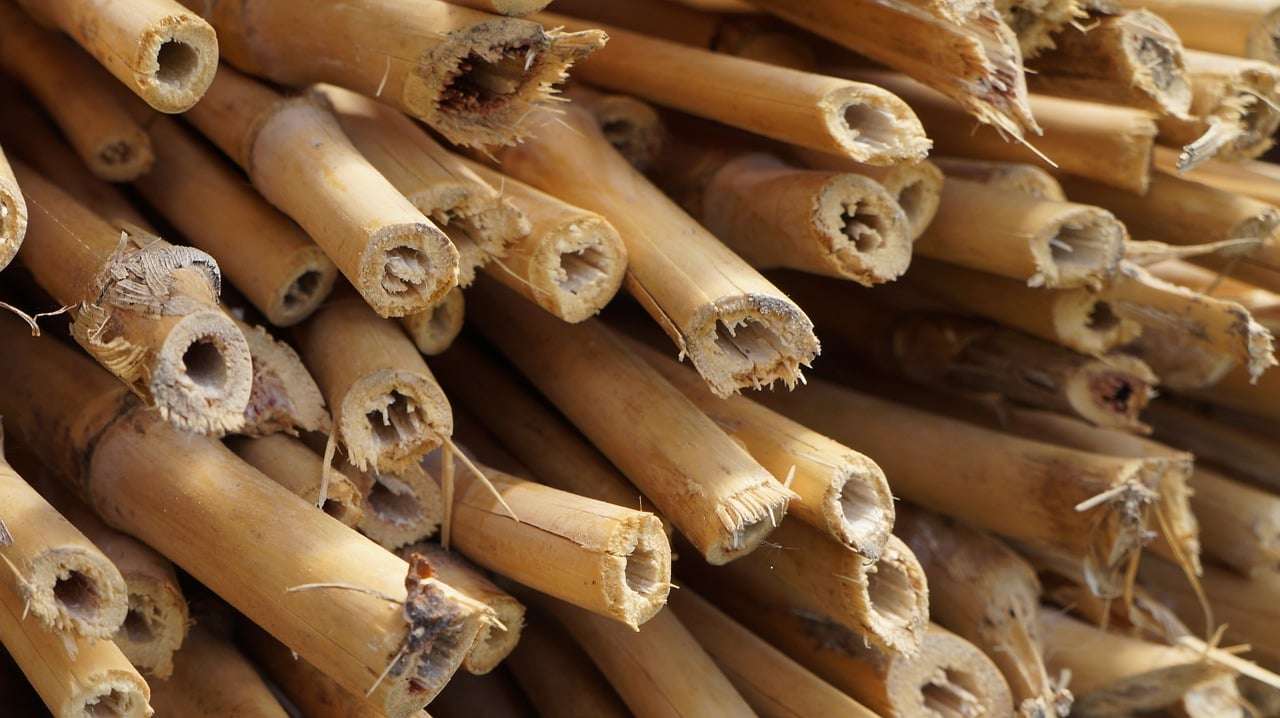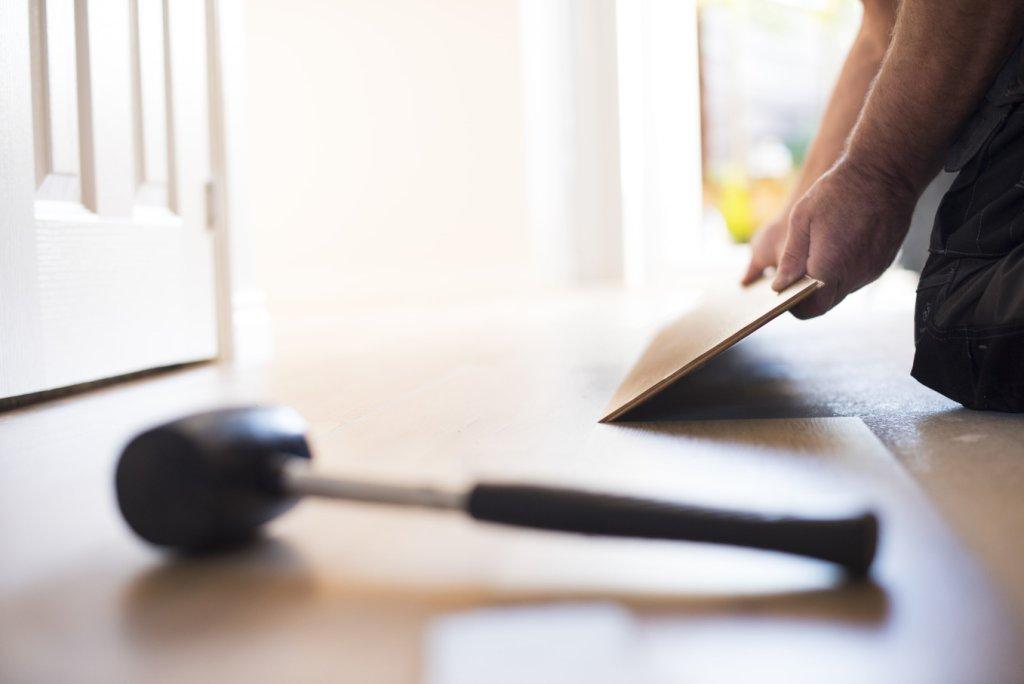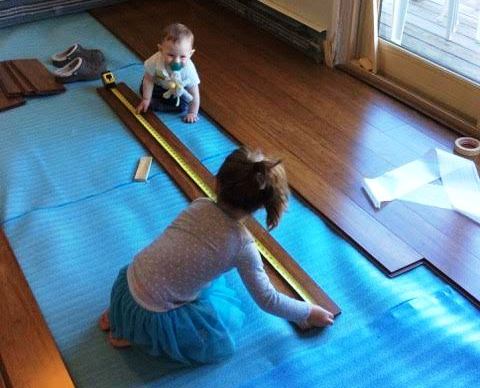Many consumers see bamboo as a luxury flooring material and it can be easy to assume that installation costs come at premium rates. You might be surprised to find that bamboo flooring can be reasonably priced — both to purchase and install. Don’t assume the cost of installing bamboo flooring is outside your home renovation budget: it’s actually right in line with hardwood floor installation costs!
Why We Can’t Get Enough of Bamboo
Did you know this natural and eco-friendly flooring is more than twice as hard as most hardwoods? Did you know that it costs about half as much per square foot? Bamboo is certainly a savvy investment — you can get premium lengths and widths (6 foot wide planks) for as little as $4.37 (as of December 2019). Add that to its incredible durability and hardness — and that it’s gorgeous with a capital “G” — and it seems easy to make a case for bamboo as the best and most practical flooring installation. Since bamboo is considerably cheaper than other hardwood options, it makes a great material for affordable home improvement projects!
Those benefits aside, if you’re working with a budget like most homeowners, you also need to consider the installation cost. This post explores how bamboo flooring installation costs fare when compared against traditional hardwoods.
Main Factors of Flooring Installation Costs
As mentioned, the cost of installing bamboo flooring can be compared to that of traditional hardwoods, which generally come in at between $2-$5 per square foot. Here are the four main factors that will affect your installation costs.
FACTOR #1: THE TOTAL SQUARE FOOTAGE
The average flooring installation is around 800 square feet. If you have less than this, installers will typically raise their installation cost per square foot to cover their costs (and earn a living!). If you exceed 2,000 square feet, installers may drop their price to give you a discount.
FACTOR #2: AMOUNT OF SIDE WORK REQUIRED
Will the installer need to rip up existing tile or hardwood flooring? Will they need to level the subfloor? Will they need to move furniture? Will they install perimeter moldings such as baseboard or shoe molding? Do you want the installer to bring the flooring into the house for acclimation? These are just a few of the items that can increase your installation cost, as they can be time-consuming and labor-intensive.
FACTOR #3: WHERE YOU LIVE
Needless to say, installation costs in densely packed or difficult-to-access areas like New York, Santa Catalina Island, or rural areas mean more transportation overhead for the installer and means higher installation prices.
FACTOR #4: THE TYPE OF INSTALLATION
Your installation costs may also depend on the type of installation required for your chosen flooring.
The glue-down flooring method is the most stable type of flooring installation but also the most expensive. It’s the most stable because the adhesive elasticity allows the wood to expand and contract naturally through the seasons. If you can afford high-quality glue, it will provide two great additional benefits: sound and moisture insulation. Additionally, if you’re planning to install over a concrete subfloor, the glue-down method is essential. It’s more expensive from an installation perspective because it’s messier and more labor-intensive than nailing or floating a floor.
The nail-down method is affordable and fast. However, over time the nails may come loose and cause squeaking in the floor due to seasonal expansion and contraction. Don’t confuse this with loose nails in the subfloor, which is the main culprit for wood floor squeaking.
Some installers will provide a discount to install using the click-lock floating method because they go much faster than glue-down or nail-down jobs. The limitation here is that, depending on your home’s indoor humidity settings, you may have limitations to the lengths of your runs.
DIY or Professional Install?
It pays to take the time to consider your new bamboo flooring installation options for your home. Installation is often an underestimated process and may require:
- Advanced tools (such as moisture meters, air compressors, pneumatic nailers, etc.)
- Expert knowledge (e.g., thoroughly reading the installation instructions)
- Careful selection of the optimal method (choosing between glue-down, nail-down, or floating)
NOTE: It’s a job that anyone can do, but it’s much easier for practiced DIY’ers. Even then, it’s necessary to arm yourself with plenty of knowledge before you start.
We’ve calculated, based on average American room sizes, the following installation costs:
Large living room: 60 square feet (min $90 max $405)
Small living room: 200 square feet (min $300 max $900)
Bedroom: Between 120 (min $180 max $540) and 200 square feet (min $300 max $900)
Kitchen: Between 200 (min $300 max $900) to 250 square feet (min $375 max $1125)
Small rooms (including foyers and utility rooms): Between 30 (min $45 max $135) and 40 square feet (min $60 max $180)
Order your free flooring samples today to be sent to your home for some decorating inspiration. Just click on the box below or call one of our knowledgeable professionals at (866) 710-7070.

About the Author
Jen is your go-to guru for crafting a cozy, green cocoon. 🪴 Her dive into sustainable building wasn’t just about saving the planet—it started as a mission to make family movie nights eco-friendly (and to ensure the popcorn was the only thing getting heated!). With a knack for breaking down the jargon, Jen turns eco-lingo into everyday language. Swing by the Green Living blog for a mix of earth-loving advice and home improvement hacks. Whether you’re just dipping your toes into green waters or you’ve been swimming in the deep end of DIY projects, Jen’s here to guide, giggle, and remind you that every eco-choice is a step towards a planet that thanks you… and maybe even sends a rainbow your way! 🌈



